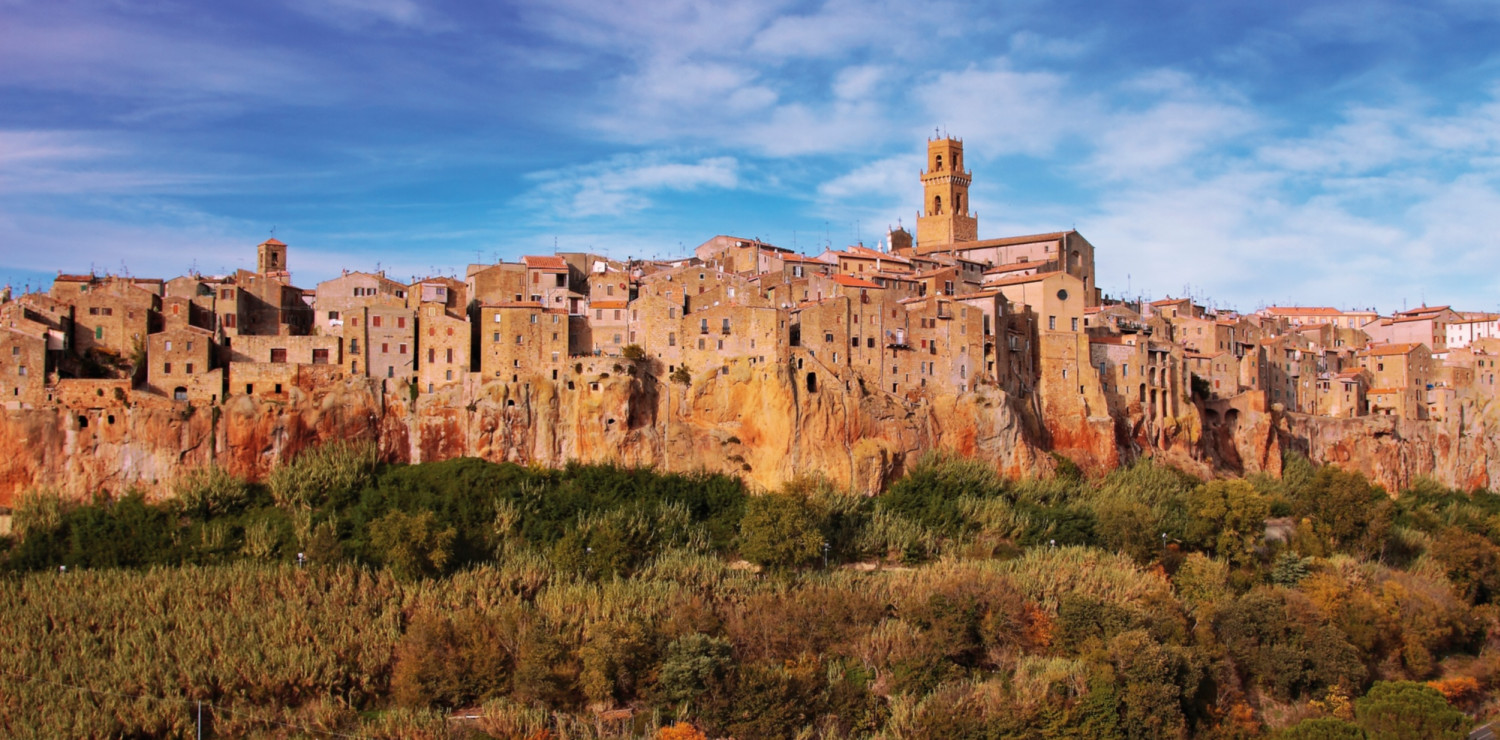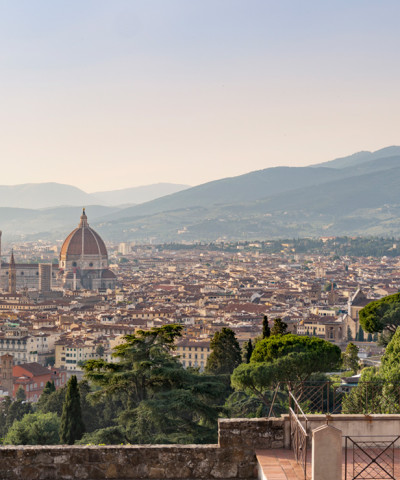Pitigliano, Sorano and Sovana: what to see and where to eat
Restaurants, hotels, churches, fortresses and everything you don't want to miss in the ancient cradle of the Etruscans
Pitigliano, Sovana, and Sorano lie in the southeastern part of Maremma, near the border with Lazio. These three gems nestled in the gentle hills of Fiora are renowned for their captivating architecture that defies reality. Despite their uniqueness and beauty, these surreal places remain far from the eyes of mass tourism. Here, time seems to flow at a different pace, creating an authentic and immersive experience.
The landscape is characterized by its contrasts, from dramatic and imposing rocks rising among forests and cliffs, to the delicacy and harmony of vineyards, olive groves, and vast golden fields of wheat.
But how were these enchanted villages born? The secret lies in a buried history. Millions of years ago, volcanic activity bestowed its artistic touch upon this land. Eruptions from volcanoes solidified over time, giving life to the characteristic tufa that makes these places so unique.
Ancient civilizations once walked these millennia-old streets. In the 8th century BC, the tufa hills were the beating heart of the Etruscan civilization, now preserving fascinating remnants of the past, such as suggestive necropolises and intricate subterranean roads to be discovered and explored. Initially used by the Etruscans and later adopted by the Romans for defense and transport, these underground paths now represent unique tourist attractions, offering a fascinating journey into the past and showcasing the engineering skills of ancient civilizations.
PITIGLIANO
From the road, the fascinating village of Pitigliano can already be glimpsed, rising with solemn grace as if it has embraced the tufa cliff it rests upon since time immemorial, merging into one organic landscape. Walking through the alleys of Pitigliano, one strolls amidst the aroma of ancient history and unexpected views, passing tufa houses that tell tales of the past, and arriving at the squares that enclose the soul of this village, bustling with local characters.
Also known as the "Little Jerusalem," Pitigliano holds a millennia-old history of its Jewish community, which has significantly contributed to the culture and richness of the place over the centuries. The synagogue, an architectural gem, bears witness to the valuable heritage of this people.
Rich in history and tradition, Pitigliano cherishes its legacy in the thriving world of winemaking. The vineyards, blessed by the volcanic tufa soil and ancient millennium-old humus, give birth to one of Italy's most esteemed white wines, renowned for its excellence: the Bianco di Pitigliano.
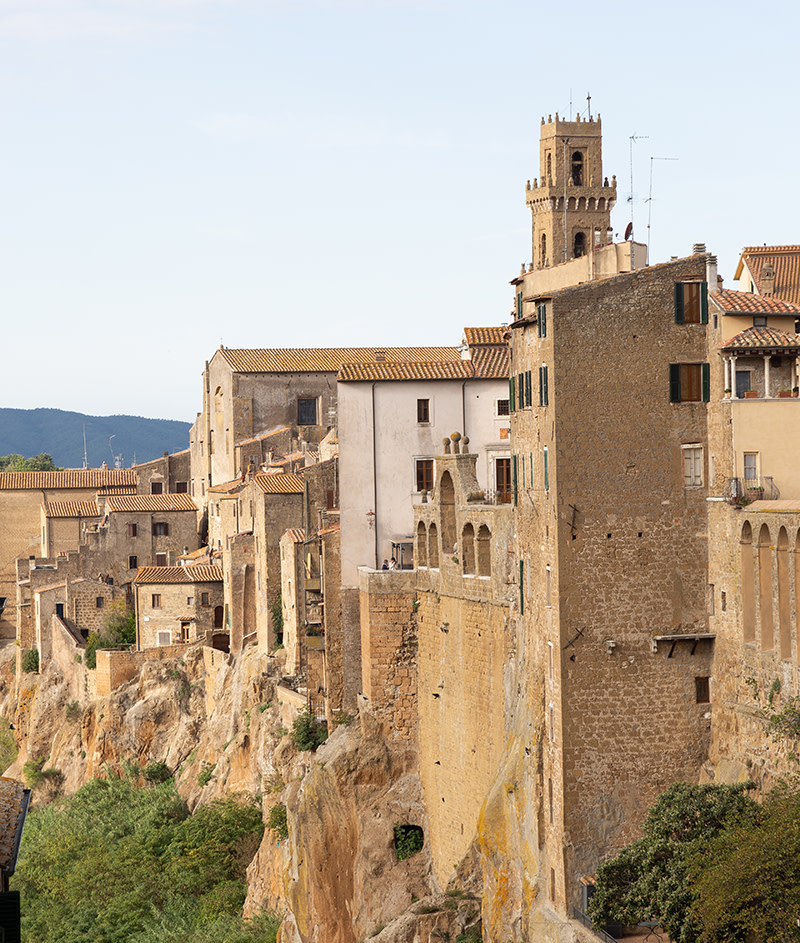 pitigliano
pitiglianoWHAT TO SEE
ORSINI PALACE
An enchanting historic residence dating back to the 12th century, originally built as a convent, later transformed into a fortress and residence of the powerful Aldobrandeschi family, and subsequently inherited by the Orsini family, who governed Pitigliano until the 1600s. Located on the landscape of the Tuscan Maremma, its panoramic view opens up to the city and the surrounding valley, creating a breathtaking scene that attracts photographers and travelers from all over the world. The Renaissance architecture of the palace is characterized by imposing arches and ornate windows, while the interiors host frescoes and sumptuous antique furnishings. Additionally, the palace houses two museums, exhibiting historical artifacts and artworks that narrate the rich local history.
CHIESA DELLA MADONNA DELLE GRAZIE
Dedicated as an ex-voto for the plague of 1527, it is a small and intimate church, characterized by its breathtaking belvedere from which you can admire the city of Pitigliano perched on the cliffs of tuff. A piece of advice? Don't miss this view at sunset, when the rocks and walls of the city light up with golden reflections.
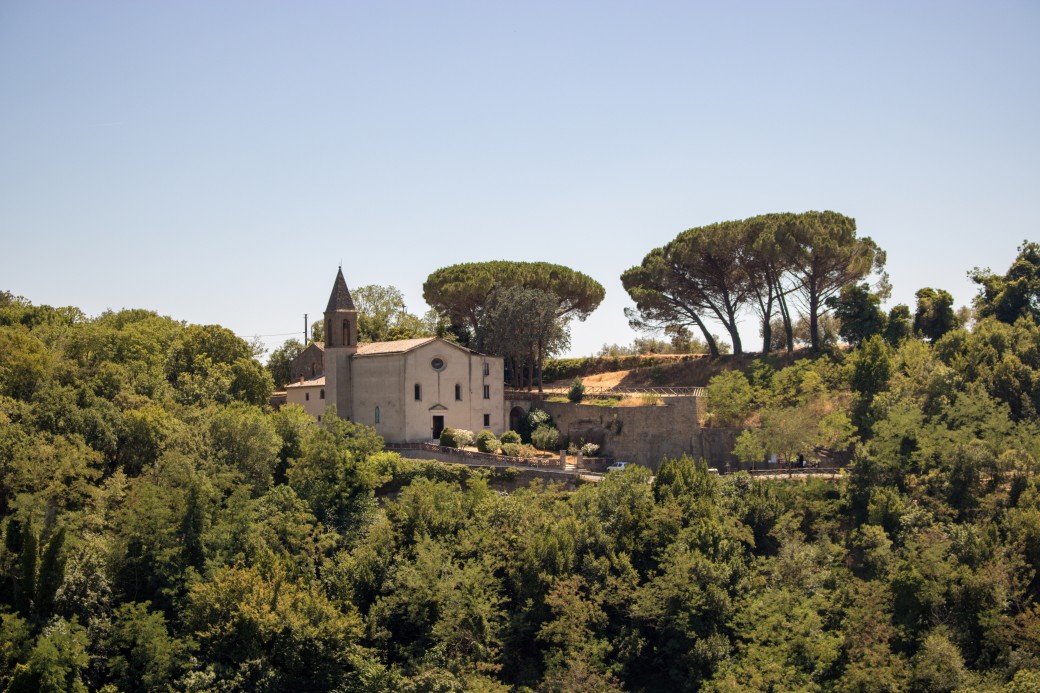 CHIESA DELLA MADONNA DELLE GRAZIE
CHIESA DELLA MADONNA DELLE GRAZIECATHEDRAL SS. PIETRO AND PAOLO
Built starting from the 13th century, the Cathedral of St. Pietro and St. Paolo features a harmonious fusion of architectural styles spanning five centuries during which the cathedral was constructed and renovated, from Gothic to Renaissance elements. Its bell tower dates back to the 13th century and was used as a defensive tower during periods of conflict. Inside, the cathedral houses an 18th-century marble altar and frescoes depicting biblical scenes. The Church rests above a network of underground catacombs, which were used as a refuge during enemy attacks.
SYNAGOGUE AND JEWISH MUSEUM
The Synagogue holds significant cultural and spiritual value and stands as an important testament to the presence and significance of the Jewish community that resided in the Pitigliano Ghetto, where it is located. Inside, there is a museum that houses sacred objects, religious texts, vestments, and other precious artifacts linked to the Jewish tradition. Through this exhibition, the millennia-long history of the Jewish community in Pitigliano is revealed to visitors.
MEDICEAN AQUEDUCT BRIDGE
Another unmissable panoramic viewpoint perched on a tufaceous spur. The Orsini family made the decision to enhance the water supply system both for their residence and the entire city. Starting from the sixteenth century, the construction works for the infrastructure began, following the plan by Antonio da Sangallo the Younger.
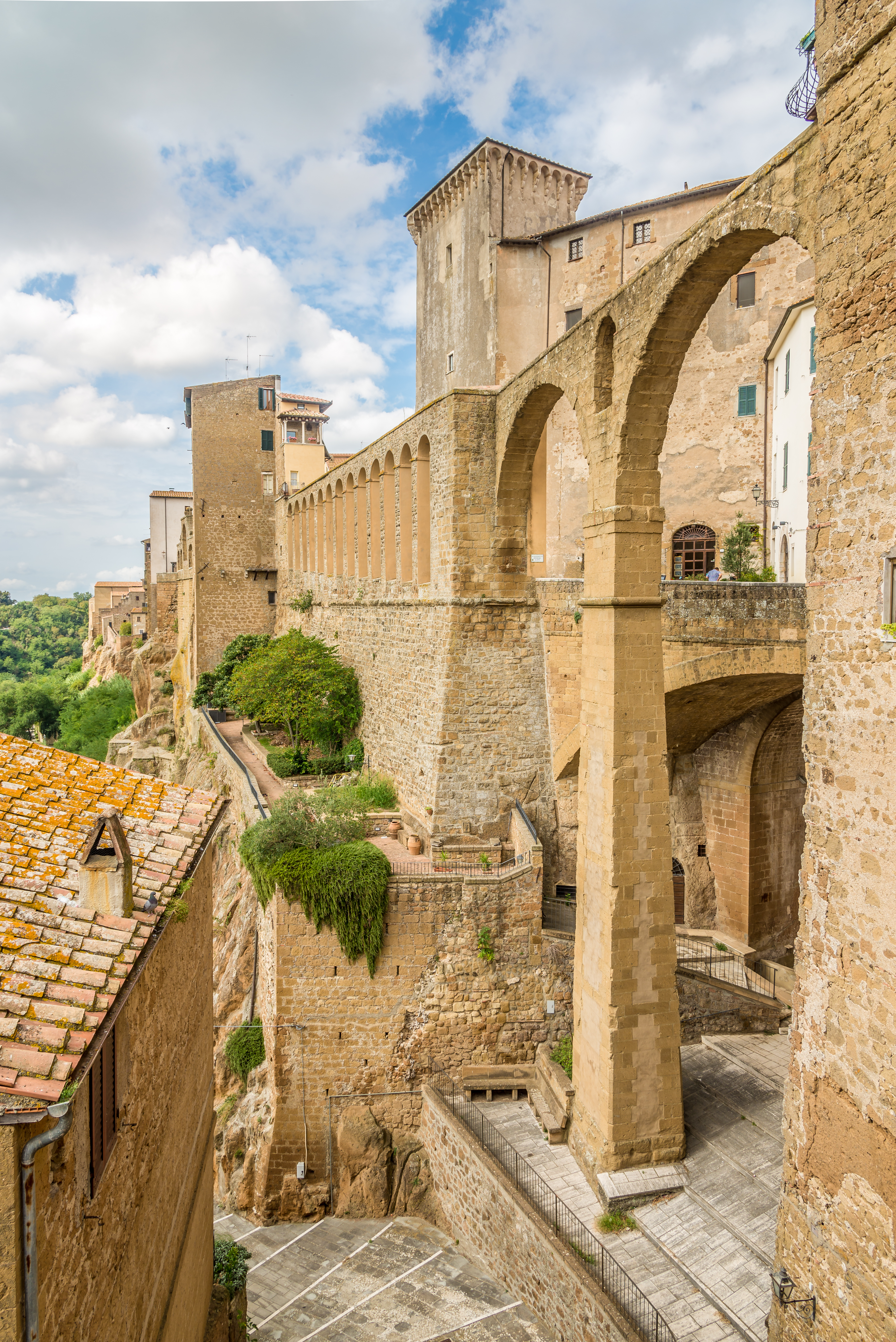 Acquedotto di Pitigliano
Acquedotto di PitiglianoSORANO
Rising from tufa rocks at just under 400 meters of altitude, Sorano is also known as the "Matera of Tuscany." A picturesque village where a fairytale atmosphere lingers, and the greenery of surrounding flora creates a unique contrast with the massive rocks. Lose yourself in the narrow alleys, observe courtyards, small arches, and visit the tufa-carved cellars. Here, life flows slowly, and the echoes of history resonate within the city walls.
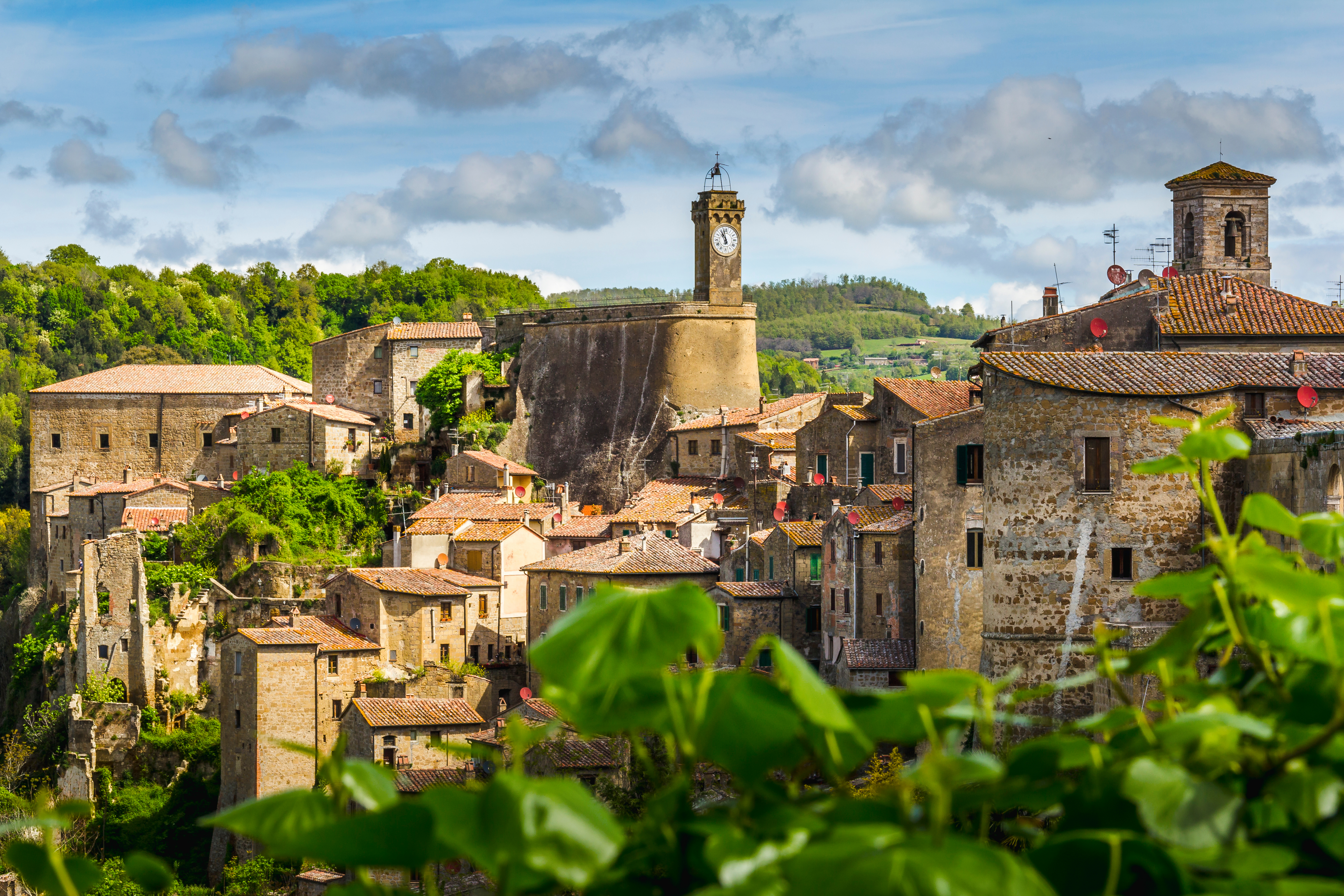 Sorano
SoranoWHAT TO SEE
SORANO THERMAL BATHS
The Sorano thermal baths boast a millennia-old history dating back to the time of ancient Etruscans who already knew and exploited the healing properties of these thermal waters. These natural springs, rich in minerals beneficial to health, have attracted the interest of various civilizations over the centuries. During the Roman period, the baths were expanded and further developed, becoming an important thermal center. Today, Sorano's modern thermal facilities combine historical heritage with modern comforts, offering visitors a rejuvenating and relaxing experience. The tranquil atmosphere and picturesque landscape make Sorano's thermal baths a unique place for both body and mind wellness.
ORSINI FORTRESS
The Orsini Fortress is located on a volcanic tufa spur, its strategic position offering spectacular views of the valley below. Built by the powerful Orsini family, the fortress is surrounded by mighty walls and towers. Now a museum of the Middle Ages and the Renaissance, exploring its historical halls and walking along the battlements is a journey through time, venturing into secret passages and admiring the panorama once contested by medieval lords.
SAN ROCCO'S ETRUSCAN ROADS
The San Rocco's quarries are carved into volcanic rock and are known for their underground caves and tunnels dating back to the Etruscan era.
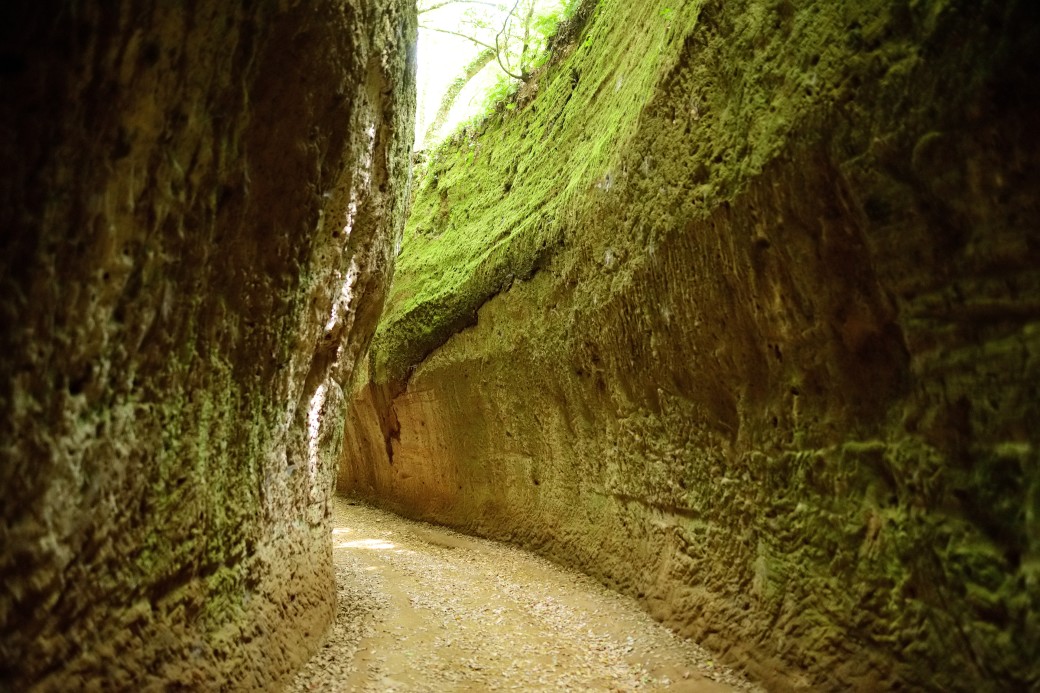 Le cave di San Rocco
Le cave di San RoccoSOVANA
Just a few kilometers from Pitigliano and Sorano, Sovana is a small gem of Maremma with less than 500 inhabitants. One of Italy's most beautiful villages, where the passage of great ancient peoples, from the Etruscans to the Romans and the Renaissance lords, can still be felt.
WHAT TO SEE
SOVANA'S ETRUSCAN NECROPOLIS
Dating back to the 7th century BC, this necropolis offers an overview of Etruscan funerary traditions. Numerous tombs carved into the rock can be found here, some decorated with reliefs and inscriptions narrating the stories of the people. One of the most famous tombs is the Ildebranda Tomb, a two-story mausoleum dating back to the 2nd century BC.
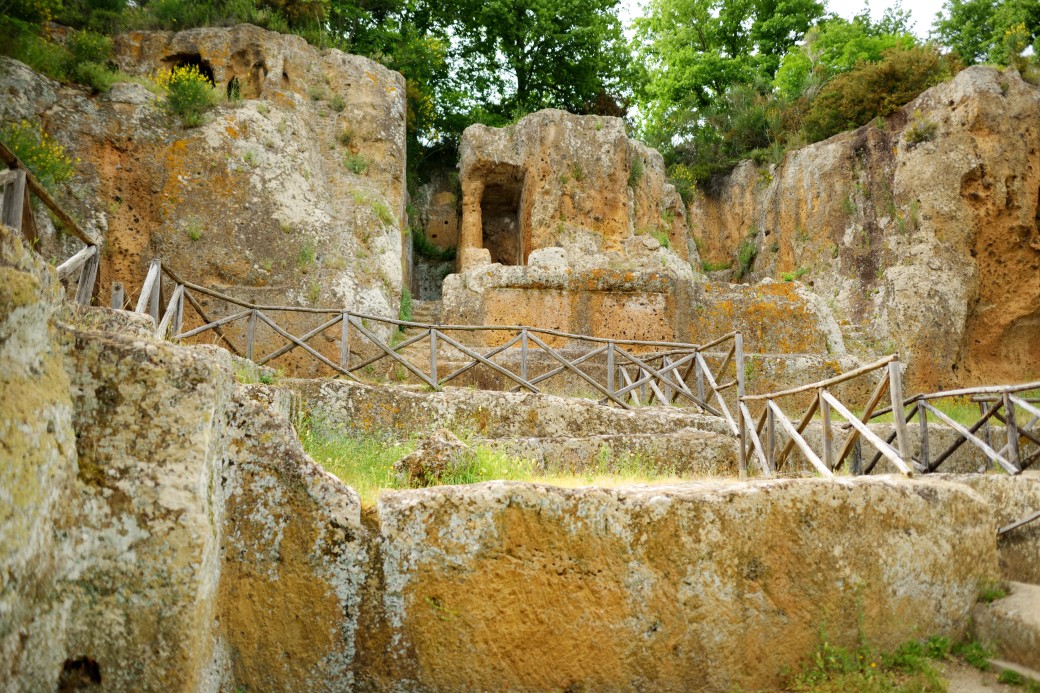 Necropoli di Sovana
Necropoli di Sovana ALDOBRANDESCA FORTRESS
The Aldobrandesca Fortress is an ancient stronghold located in the heart of Sovana. Built by the Aldobrandeschi lords in the 13th century, it represents an important example of medieval defensive architecture. Over the centuries, it underwent various modifications, becoming a noble residence and later a prison. Today, the Aldobrandesca Fortress is open to the public, allowing visitors to explore the history of this ancient building.
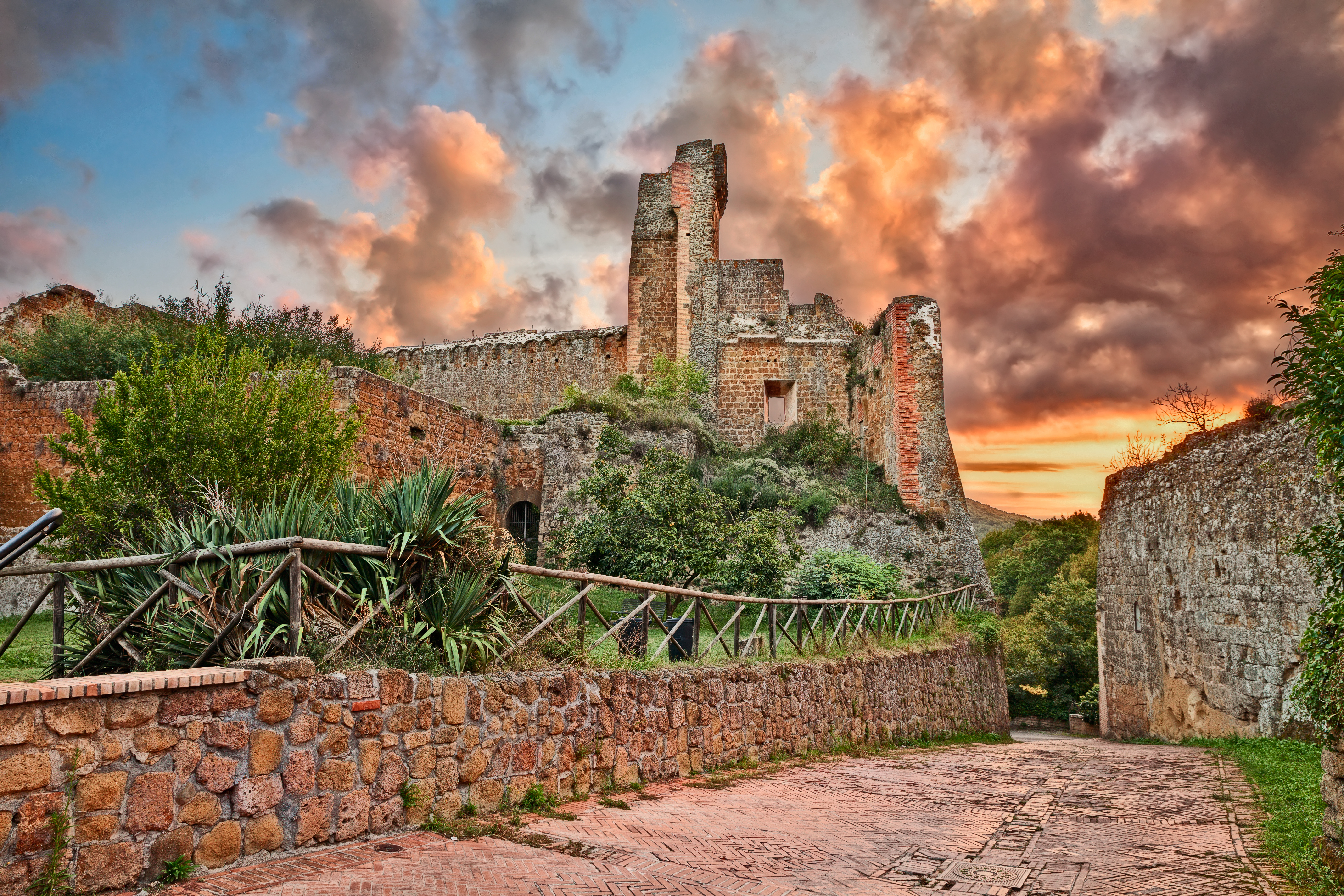 Rocca Aldobrandesca
Rocca AldobrandescaPRETORIO PALACE
Built-in the 14th century, it represents an example of medieval civil architecture. The palace is characterized by its imposing facade and battlements on the top. Today it houses an interesting museum that tells the history and traditions of the region.
WHERE TO EAT IN PITIGLIANO, SORANO, AND SOVANA
IL CAVEAU Via Vignoli, 146 - Pitigliano ph. +39 0564 1920908
An enchanting location where guests can taste the excellence of Maremma from an elegant panoramic terrace. The menu focuses on quality local products with an innovative twist. The restaurant follows a dry-aged policy, characterizing all cuts of meat present in the visible aging cabinet. Several homemade products, such as jams, fresh bronze-extruded pasta, and various types of bread.
HOSTARIA DEL CECCOTTINO Piazza S. Gregorio VII, 64 - Pitigliano ph. +39 0564 614273
Located in the heart of Pitigliano's historic center, a stone's throw from the Jewish ghetto, this trattoria stands out for its elegant yet informal and traditional ambiance. The menu offers a selection of typical local dishes and an extensive wine list. The pitiglianesi crostini, garnished with spleen and liver, are particularly recommended. Among the first courses are the pici with white duck or wild boar sauce, while among the main courses, the Ceccottino lamb and the fillet with Morellino di Scansano wine stand out, along with the sliced meat and rabbit porchetta. Do not miss the typical Jewish dessert of Pitigliano: the Sfratto, shortcrust pastry filled with dried fruit, honey, almonds, and orange.
IL TUFO ALLEGRO Vicolo della Costituzione, 5 - Pitigliano ph. +39 0564 616192
A delightful typical restaurant carved into tufa rocks that perfectly blend with the surrounding landscape. Among the most loved dishes on the menu are the cod millefoglie mantecato with Orbetello bottarga, onion soup, and red potato gnocchi with pork sauce.
TAVERNA ETRUSCA Via del Pretorio, 16 - Sovana ph. +39 349 124 5540
A rustic style with exposed beams, terracotta flooring, and a beautiful terrace for the summer months make this typical restaurant a charming location where you can breathe an atmosphere of bygone times, with timeless cuisine. Must-try dishes include the Sovana acquacotta with poached egg and the beef tagliata with artichokes.
CANTINA L’OTTAVA RIMA Via del Borgo, 25 - Sorano ph. +39 349 802 4196
A small and picturesque tavern with a few tables inside a tufa cave. Immerse yourself in a homely, warm, and welcoming atmosphere adorned with paintings, books, and subdued lights. Typical traditional dishes and an excellent fish menu.
WHERE TO STAY IN PITIGLIANO, SORANO, AND SOVANA
SOVANA HOTEL & RESORT Via del Duomo, 66 - Sovana ph. +39 349 183 6939
Located in the midst of uncontaminated nature, it is the ideal place for a peaceful vacation to discover the Tufa Hills. Several activities are offered, such as historical tours, food and wine experiences, walks, archeo-trekking, horseback riding, and a beautiful swimming pool to relax in after a long day of exploration.
TERME DI SATURNIA - Natural SPA & Golf Resort Loc. Follonata - Saturnia ph. +39 0564 600111
Located just 24 kilometers from Pitigliano and Sovana, Terme di Saturnia is the ideal place to explore the tufa cities while staying in a regenerating paradise. It boasts an 18-hole golf course and an elegant thermal spa in travertine with Roman baths and natural pools. The Terme di Saturnia's wellness center, complete with a hot tub, Turkish bath, and sauna, also offers treatments and massages.
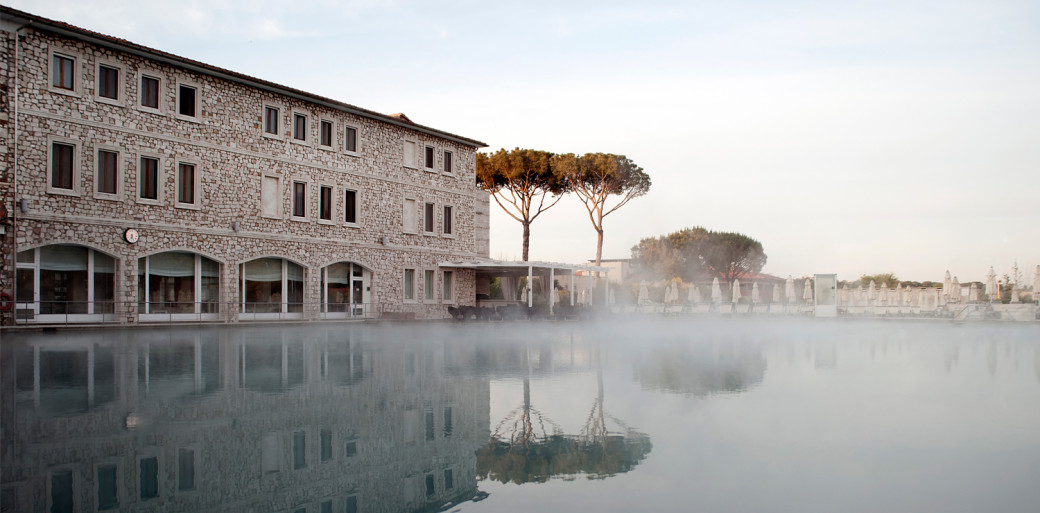 Terme di Saturnia
Terme di SaturniaHOW TO GET THERE
From Florence: The journey by car takes approximately 2.5 - 3 hours. The recommended route is to take the Autostrada del Sole (A1) heading south, then take the "Chiusi-Chianciano Terme" exit and follow the signs for Chianciano Terme, San Casciano dei Bagni, and then Pitigliano, Sorano, and Sovana.
From Rome: Take the Autostrada del Sole (A1) heading north. After about 70 km, take the exit for Orvieto. From Orvieto, continue on the provincial road SP19 towards Sorano and Sovana. From Sovana, you can easily reach Pitigliano, which is just a few kilometers away.






